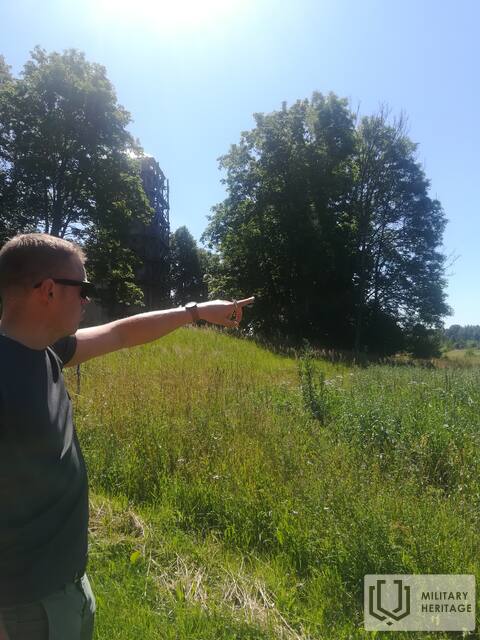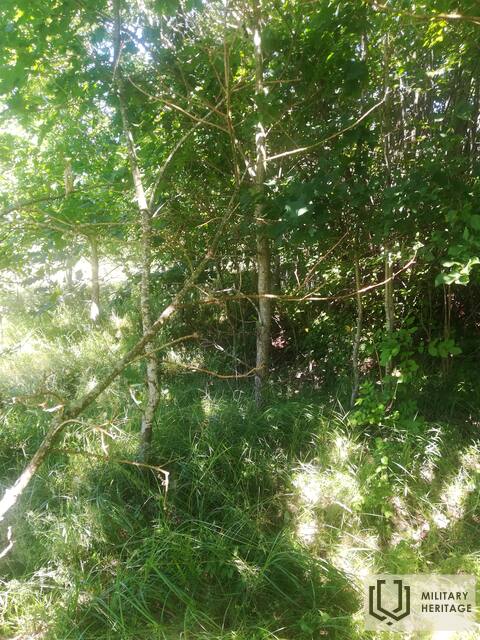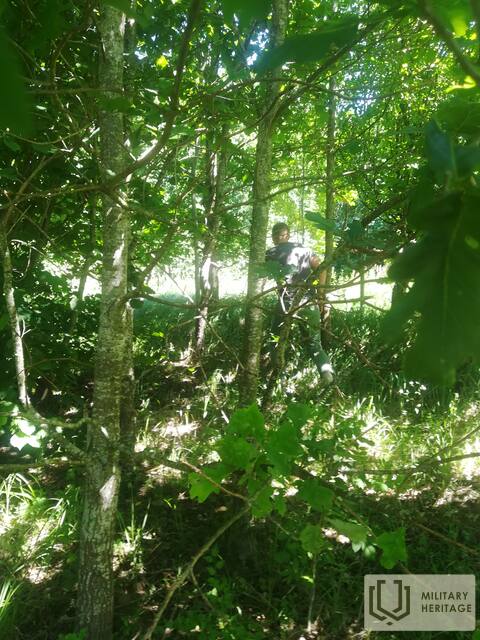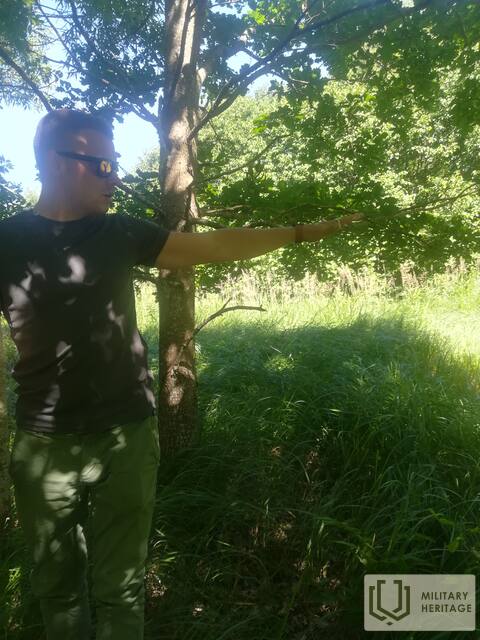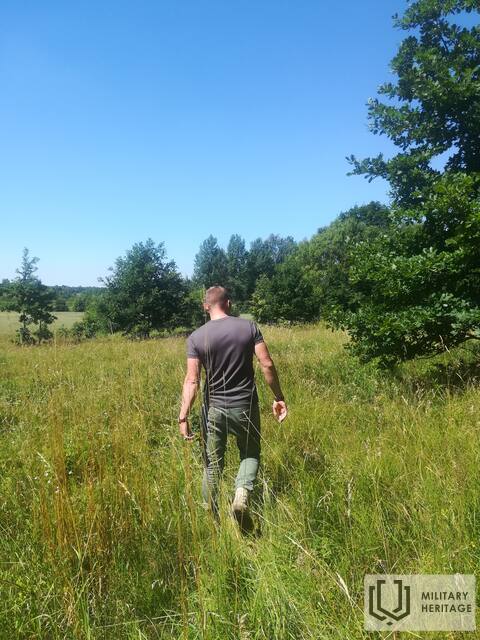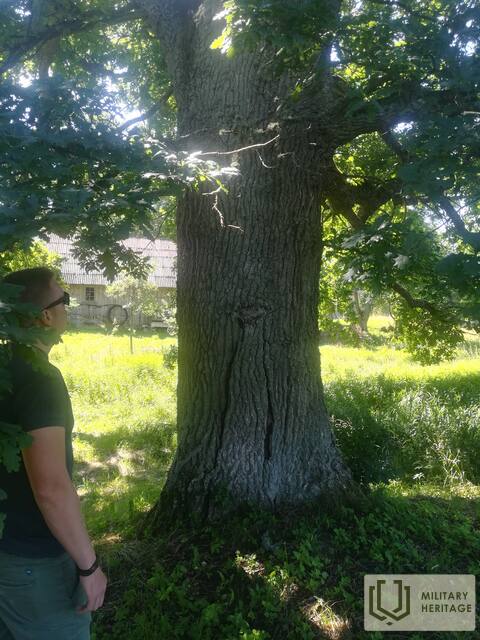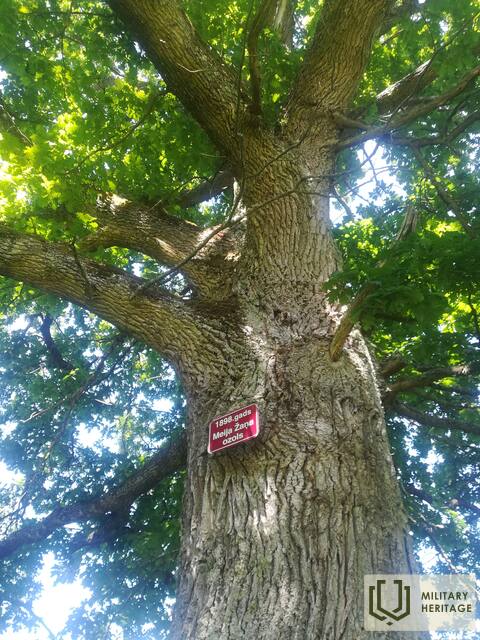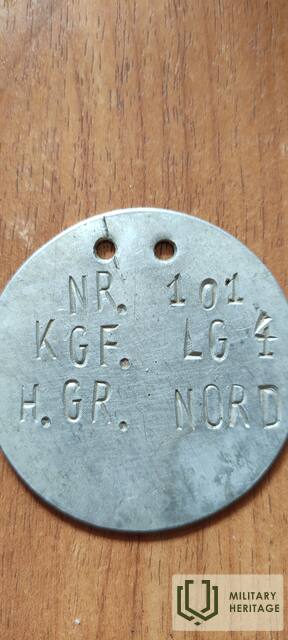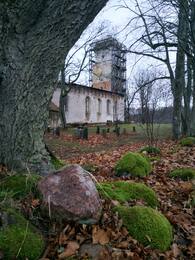The corncrake camp in 1945 - a place where destinies were dissolved
Historian Roberts Sipenieks talks about the finds at the site of the Grieze filtration camp
The location of the camp was most likely chosen because it was far from possible guerrilla activities. The camp was located on the road between the church and the cemetery. There are no traces of walls or barracks, but there are smaller and larger pits in the ground, which means that the prisoners have lived in the open air and spent the nights in their own pits, so that they can withstand the cold on the cold spring nights.
After the capitulation of the Kurzeme fortress, about 200 thousand men from the German armed forces surrendered, but the Russians wanted to find out what other men had done in the area during the war. In the absence of clear information, all 16- to 60-year-olds were screened.
The camp in Grieze housed civilians, refugees and, most likely, non-German soldiers. A little further on from the Sāmaiši house was a German soldiers' filtration camp.
If someone escaped from the camp, he was shot on the spot. People remember that women from all over Kurzeme came to the camp to look for their sons, men.
saldus zeme, 26.10.2021.
Related timeline
Related topics
Related objects
Red Army prisoner filtration camp in Grieze and Grieze Church
Grieze is located at the Latvian-Lithuanian border, where the Vadakste River flows into the Venta River. The Grieze church was built in 1580, but the parish existed before 1567. The church was rebuilt several times - in 1769, in 1845 and in 1773 the first organ was installed. Both the altarpiece and the two bells have been lost for various reasons.
In the church garden there is a cemetery where people belonging to the church and noblemen are buried. One of them is Grieze organist Friedrich Baris and his wife Charlotte, who have a monument erected in front of the church sacristy. On the south side of the church, 32 Swedish soldiers who died in the Great Northern War are buried. The cemetery also contains the graves of 110 German soldiers who died in the First World War, for whom a monument was erected in 1930.
During the Second World War, the church suffered when the front line was stretched along the Venta River in late October 1944 and the German 225th Infantry Division was stationed in the vicinity of Grieze Church. When the Soviet 4th Shock Army launched attacks across the Venta River on 19 November 1944, several artillery shells hit the south wall of the church and the church tower was badly damaged.
After the surrender of Army Group Kurzeme, the Red Army's Leningrad Front accounted for 284 171 people taken prisoner. 7493 were Red Army soldiers released from German captivity. 48 German generals surrendered to captivity. According to the documents submitted at the time of the surrender of Army Group Kurzeme, the number of soldiers was about 185 000. The rest of the nearly 100 000 people subjected to filtration were Kurzeme civilians and Soviet refugees, as the Soviet Leningrad Front ordered on 10 May 1945 that all men between the ages of 16 and 60 be subjected to filtration.
In the Red Army, unlike the armed forces of other countries, the screening, guarding, maintenance and protection of prisoners of war was carried out not by army units, but by the internal affairs bodies - the People's Commissariat for State Security. The main task of the filtration was to detect citizens of the USSR and Soviet-occupied countries who had taken part in the hostilities on the German side. Captured German soldiers were examined in order to detect possible perpetrators of war crimes.
A prisoner-of-war filtration camp was located in the vicinity of the Grieze Church from 10 May to 17 June 1945. The camp was probably located here because the Grieze Church was close to the main roads. The pits in the ground where the prisoners hid from the cold on cold nights by covering themselves with whatever was available are still clearly visible in the surrounding area. During this period, the Red Army caused considerable damage to the interior of the church (all the pews were removed - "for the war effort", the pulpit was damaged, the organ was destroyed, etc.). A laundry was set up in the church building itself.
The last service in the church was in 1950 and the congregation ceased to exist. After the dissolution of the congregation, also later under the supervision of the Latvian Society for the Protection of Nature and Monuments, the church was not repaired. However, the building stood under roof until the 1960s-1970s. The church was damaged during the storm of 1961 and in 1968 the remaining interior elements were rescued by the Rundāle Palace staff.
Since 2003, a group of like-minded people from Riga parishes have been involved in the clean-up and restoration of the church. To date, the church walls have been conserved and the tower has been restored.




